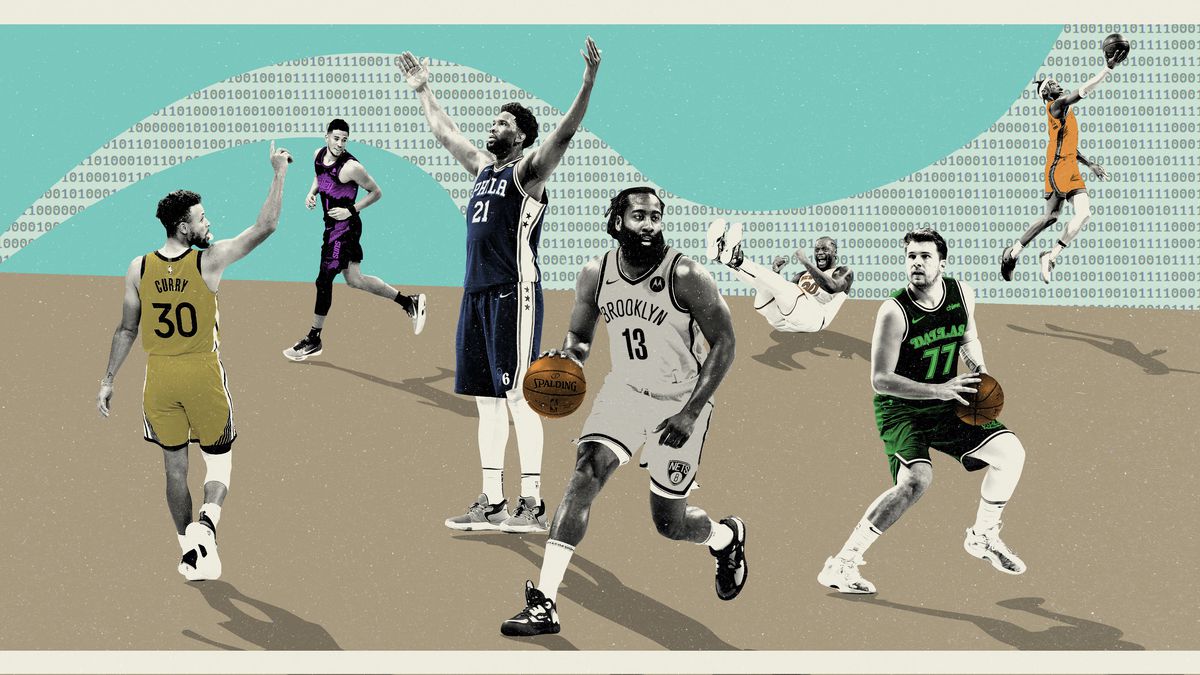(? The Ringer)
About a year ago, I trained Dean Oliver’s four factors (AKA the outcomes for a possession) on offensive and defensive ratings from 1974 to 2019 to estimate the per-100 performance of a team. The results were extremely promising (R^2 of 0.99 with no heteroscedasticity), so it’s fair to say most teams will be well-represented by this method. I’ve decided to return to this system at the closure of the 2021 regular season to look at how the model viewed teams this season!
The Method
As stated earlier, Oliver’s four factors are extremely predictive of how well a team performances in a given season. (This is expected because the outcome of a possession greatly influences how many points are scored and allowed.) The 2021 results are out-of-sample; the training data covered almost every season since the initial recording of the four-factor statistics, with a smaller sample validating the results. The model itself passed the standard criteria for use as an OLS regression model, with the final product being split into offensive and defensive components.
The Results
The 10 Best Teams:
- Utah Jazz (+7.5 Net)
- Philadelphia 76ers (+5.8 Net)
- Milwaukee Bucks (+5.5 Net)
- LA Clippers (+5.2 Net)
- Brooklyn Nets (+5.1 Net)
- Phoenix Suns (+5.0 Net)
- Denver Nuggets (+3.6 Net)
- Los Angeles Lakers (+2.9 Net)
- Dallas Mavericks (+2.4 Net)
- Atlanta Hawks (+2.3 Net)
Unsurprisingly, the Utah Jazz remain the best team in this model, but with a significant error between their actual Net Rating and predicted Net Rating, straying 1.8 points away from the real mark of +9.3 Net. The Sixers sneak up from fifth to second here, with a +0.2 point overestimation ranking them as the Eastern Conference’s regular-season champion.
The 10 Best Offenses:
- Brooklyn Nets (117.9 ORtg)
- Milwaukee Bucks (116.6 ORtg)
- Portland Trail Blazers (116.5 ORtg)
- Utah Jazz (116.2 ORtg)
- LA Clippers (116.1 ORtg)
- Phoenix Suns (116.1 ORtg)
- Denver Nuggets (115.7 ORtg)
- Dallas Mavericks (115.1 ORtg)
- Atlanta Hawks (114.8 ORtg)
- New Orleans Pelicans (113.6 ORtg)
This mostly resembles the actual offensive rating leaderboard, with another Eastern Conference stand-out popping up to #2 and teams like the Pelicans narrowly stepping into the top-10 over the Philadelphia 76ers and their 113.1 predicted offensive rating.
The 10 Best Defenses:
- Los Angeles Lakers (107.2 DRtg)
- Philadelphia 76ers (107.3 DRtg)
- New York Knicks (108.3 DRtg)
- Utah Jazz (108.7 DRtg)
- Golden State Warriors (109.9 DRtg)
- Miami Heat (110.2 DRtg)
- Memphis Grizzlies (110.4 DRtg)
- LA Clippers (110.9 DRtg)
- Milwaukee Bucks (111.1 DRtg)
- Phoenix Suns (111.1 DRtg)
There are no real surprises in the defensive component, which posts the same ten teams in a slightly different order. As is with its offensive half, the model found floor efficiency and turnover rates were far more predictive of a team’s success than rebounding rate of FT/FGA, so the results may be a tad biased toward teams who contest well and induce a lot of turnovers.
Discussion
Because this used an ordinary least squares approach, each of the four factors was valued on how they correlated to teams’ actual Net Ratings. Using the correlation coefficients of each factor, we could estimate each statistic’s relative importance:
to Offensive Rating
- Efficiency (68%)
- Turnovers (28%)
- Rebounding (0%)
- FT/FGA (1%)
to Defensive Rating
- Efficiency (74%)
- Turnovers (19%)
- Rebounding (0%)
- FT/FGA (1%)
Efficiency from the floor is the “most important” statistic, and this passes our intuitive checks, as field goals are the most frequent offensive action to end a possession in the sport. Turnovers happen about 10-15 times a game, so its presence is made clear despite a lesser occurrence. Rebounding is interesting. Because offensive rebounding is significantly less common than defensive rebounding, its importance won’t be really high. But this model doesn’t seem to think much of it at all. Because events like rebounding rates and free-throw percentages are more clustered and arguably have a lesser impact on the eventual outcome of a possession, they far less important relative to the other outcomes.
—
I posted an interactive leaderboard for teams here, which covers each team and goes into more detail on error rates and which teams were over or under-represented.

Leave a Reply